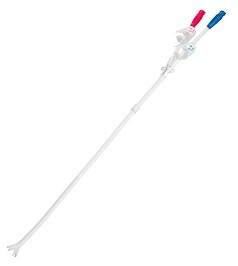
American medical technology company BD (Becton, Dickinson and Company) has received 510(k) clearance from the US Food and Drug Administration (FDA) for its Pristine long-term haemodialysis catheter—a new haemodialysis catheter with a unique side hole-free symmetric Y-tip distal lumen design.
The Pristine catheter, which was originally developed by Israeli firm Pristine Access Technologies, will be available in the USA from May 2021.
Michael Tal, director of interventional radiology at Assuta Hospital (Tel Aviv, Israel), and inventor of the Pristine catheter, said: “A majority of haemodialysis patients in the USA start their treatment with a catheter and many of those catheter-dependent patients will suffer a catheter-related complication at some point during treatment, which can adversely impact the patient, and create additional healthcare system costs.”
“The Pristine catheter was designed with haemodialysis patients in mind, and to help address some of these concerns.”
According to BD, haemodialysis catheters are often challenged by complications, as certain catheter tip designs can lead to positional occlusion, high recirculation rates and thrombus formation. These complications can potentially lead to reduced catheter patency and decreased catheter performance—but BD claims its Pristine catheter device is designed to help address these challenges.
In a press release, the company added that the Pristine catheter’s side hole-free tip is designed to help minimise the thrombus adhesion that can be associated with side-hole catheters, as well as helping to facilitate blood clot aspiration prior to haemodialysis treatment. The symmetric tip is also designed to help minimise recirculation rates in both forward and reverse.
In a prospective, single-centre non-randomised, open-label feasibility study performed outside of the USA, 45 patients who were treated using the 15.5F Pristine catheter were monitored for six months following implantation. BD has claimed that all catheters were patent 30 days after implantation, while post-procedure primary patency rates at 60 and 180 days were 100%, and 90.9%, respectively.
Padraic O’Brien, worldwide president of peripheral intervention at BD, said: “The clearance of the BD Pristine catheter adds to our diversified portfolio of products in support of clinicians who care for patients with end-stage kidney disease [ESKD] requiring haemodialysis. This exciting technology is highly complementary to our current ESKD portfolio and will enable us to offer a differentiated product that can help to improve the patient experience.”












